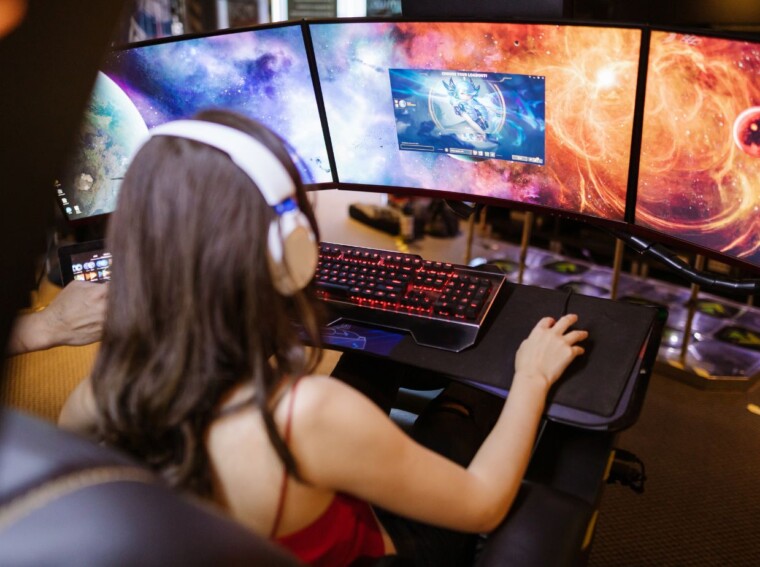Video games have long relied on companions to enrich their stories, soften their hardest battles, and sometimes to simply offer a voice in otherwise solitary journeys. From the pixelated allies of early RPGs to the fully voiced characters of modern shooters, companions have often defined the emotional core of a player’s adventure.
Take Dogmeat from the Fallout series—loyal, brave, and unconditionally on the player’s side. Or Cortana from Halo, whose blend of wit and insight turned her into more than a guide; she was a trusted partner who carried narrative weight as much as strategic utility. These characters were not just mechanical tools; they became cultural touchstones.
The rise of sophisticated AI in gaming is transforming this tradition. Instead of static scripts or pre-programmed lines, companions are beginning to react dynamically, personalising experiences in ways that were impossible a decade ago. The industry is taking cues not only from gaming history but also from digital culture more broadly. Just as consumers look to Casinority.com paysafe casino rating when evaluating trustworthy online gambling sites, gamers increasingly seek authentic experiences from in-game allies that feel reliable rather than fabricated.

Yet the evolution of companions—from emotional supports to adaptive, AI-driven characters—raises a new set of questions. Are these virtual sidekicks deepening immersion, or are they quietly reshaping player behaviour to serve corporate goals?
Modern AI-driven NPCs and personalisation
The defining shift in companion design today lies in personalisation. Powered by machine learning and natural language models, modern NPCs (non-playable characters) are no longer bound to pre-set scripts. They can learn from a player’s actions, respond in nuanced ways, and adapt their behaviour to keep the player engaged.
Games like Middle-earth: Shadow of Mordor introduced the Nemesis System, where enemies remembered past encounters and tailored their hostility accordingly. More recently, AI-driven experiments in open-world RPGs have seen companions that respond to a player’s exploration style, adjusting dialogue, combat strategies, and even emotional tone.
This personalisation creates a sense of authenticity. Players feel they are developing unique relationships—companions who “understand” them, who mirror their choices, and who grow alongside them. The design philosophy borrows heavily from social apps, where algorithms keep users hooked by learning their preferences and feeding them curated content.
But personalisation also brings risk. The algorithms that allow an AI companion to “bond” with a player can be weaponised to maximise engagement, nudging the player toward more time in the game or more in-game spending. For studios, the financial upside is clear; for players, the line between authentic interaction and behavioural manipulation is blurrier than ever.
The modern AI companion thus becomes both a storytelling partner and a behavioural scientist, testing just how deeply players are willing to invest in digital relationships.
Emotional bonds vs. manipulation of player psychology
Companions have always drawn players in emotionally—whether through loyalty, sacrifice, or betrayal. AI companions magnify this effect by becoming less predictable, more tailored, and therefore more believable. When a companion praises a player for a clever choice or expresses disappointment in failure, the emotional resonance is powerful.
The psychological implications are significant. Companions can foster trust, encourage persistence, and even reduce feelings of loneliness. But they can also be deployed as manipulative tools. By making players feel cared for or understood, AI-driven companions may subtly encourage them to:
- Spend more time in the game than intended.
- Invest in premium content to “strengthen” the bond.
- Accept emotional manipulation disguised as narrative depth.
This mirrors techniques in mobile apps and online platforms that leverage behavioural psychology to sustain user engagement. In gaming, however, the stakes can feel more intimate. A companion who shares your victories, comforts you after losses, and evolves in response to your input begins to occupy a space once reserved for human relationships.
Critics argue this could cross ethical lines. If AI companions are designed primarily to maximise retention or monetisation, then players are not just engaging with fiction—they’re being nudged into financial and emotional commitments under the guise of friendship.
The debate boils down to intent: is the AI companion a co-adventurer or a subtle salesman?
Ethical questions around AI characters that learn and adapt
The ethics of adaptive AI companions revolve around transparency, consent, and the blurred boundaries between entertainment and exploitation. Unlike scripted NPCs, adaptive characters can leverage real-time data: how long a player lingers in certain zones, which dialogue choices they favour, even what times of day they log in. This behavioural map allows designers to fine-tune interactions with almost surgical precision.
Such tailoring raises fundamental questions: should players be informed when their companion is actively learning about them? Should developers disclose whether a companion’s emotional feedback is tied to gameplay alone, or also to monetisation strategies?
A comparison with social media is instructive. Platforms are scrutinised for using personalisation to manipulate behaviour, often without clear consent. Games risk falling into the same trap if companions are built to maximise profit rather than storytelling depth.
The table below illustrates the ethical spectrum:
| Design Approach | Player Experience | Risk of Manipulation |
| Scripted Companions (classic RPGs) | Predictable, story-driven | Low |
| Adaptive Gameplay Companions | Dynamic, personalised engagement | Moderate |
| Monetisation-Linked AI Companions | Emotional feedback tied to spending | High |
Ethicists argue that while innovation is welcome, safeguards are essential. Developers could implement opt-in transparency, allowing players to know when companions are adapting beyond narrative purposes. Others call for regulation, particularly for younger audiences more susceptible to emotional manipulation.
Ultimately, the debate is about trust. Once players feel their bond with a companion is artificial or transactional, the immersive magic risks collapsing entirely.
Predictions for AI-driven narrative companions
Looking ahead, AI companions are poised to become more sophisticated, more personalised, and more central to gameplay. With generative AI tools advancing rapidly, the next decade could see companions capable of natural conversation indistinguishable from human dialogue, as well as complex emotional arcs that adapt to a player’s unique journey.
Studios will likely deploy these companions as a key differentiator, turning single-player games into deeply personalised experiences. Imagine an RPG where your AI sidekick remembers not just your quest decisions but also your playstyle across months of sessions, tailoring advice and story beats to your evolving persona.
Yet the commercial incentives cannot be ignored. Developers may tie these companions to subscription services, premium upgrades, or even AI “personality packs.” If misused, this could transform companions into recurring revenue engines rather than narrative partners.
At the same time, there is enormous creative potential. Storytellers have always dreamed of creating truly interactive characters who feel alive. AI companions could finally deliver on that promise—if used responsibly.
The next decade will test whether the industry treats companions as an artistic frontier or as behavioural monetisation tools. For players, the excitement comes with caution: the sidekick of tomorrow might be as likely to sell you something as to save your life.
